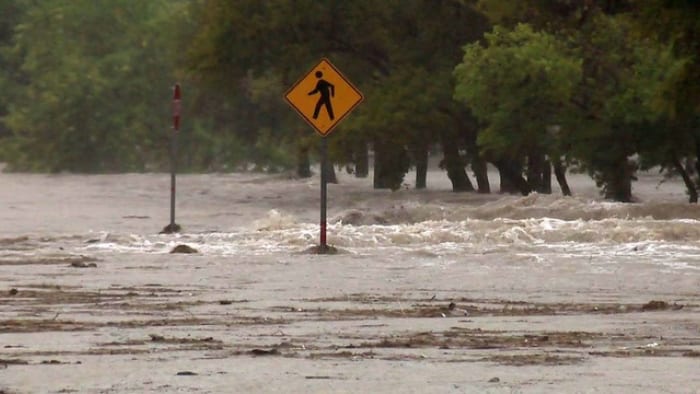Sunday, May 4 marked the start of Hurricane Preparedness Week, which is all about education, awareness and action.
While San Antonio isn’t located directly along the Texas coast, the Alamo City is far from immune to the impacts hurricanes and tropical systems can bring. Some extreme weather examples include flash flooding, damaging winds and tornadoes.
When is the Hurricane Season?
The Atlantic Hurricane Season officially runs from June 1 through Nov. 30, while the Pacific Hurricane Season begins on May 15. Now is the time to ensure you, your home and your family are ready before storms are even on the radar.
Know the Hazards – Not Just for Coastal Areas
Many people assume hurricanes are only a threat to coastal cities. The reality is that the hurricane impacts — especially flooding and strong winds — can stretch hundreds of miles inland. San Antonio has experienced remnants of hurricanes and tropical storms that brought dangerous weather, including deadly flash floods.
Storm surge may not reach San Antonio directly, but it can cripple coastal areas where many friends and family may reside.
Flash flooding from heavy tropical rainfall is a top concern for our region. Areas outside traditional flood zones can also experience serious impacts.
High winds can knock out power, uproot trees and damage property well inland.
Tornadoes often occur in the outer bands of tropical systems.
Preparation Starts Now
Being ready before a storm is crucial. That means having a plan, gathering supplies and staying informed. Here’s how San Antonio residents can get ahead of any storm:
Pack a Go Bag: Include at least three days’ worth of food, water, medications, hygiene items, chargers, cash and important documents. Don’t forget your pets! They’ll need food, meds and comfort items, too.
Know Your Risk: Use resources like FloodSmart.gov or NOAA’s Coastal Flood Exposure Mapper to determine if you live in a flood-prone area or evacuation zone. Even if you’ve never experienced a flood before, that doesn’t mean your area is 100% immune to flooding.
Prepare Your Home: Secure loose outdoor items, board up windows and unplug electronics, if flooding is likely. If you’re leaving, shut off utilities and move your car to higher ground.
Plan for Shelter: If evacuation becomes necessary, keep your options open: a friend or family member‘s home, a hotel or a public shelter. Make arrangements for pets. Most public shelters won’t accept them.
Help Your Neighbors: Check in on your older neighbors, people with disabilities and anyone who may need help preparing or evacuating. Community support can make all the difference.
Understanding Forecasts & Alerts
Forecast tools like the National Hurricane Center’s Cone of Uncertainty can help show where the center of a storm might go, but hazards often stretch far outside this area. The KSAT Weather Authority App is a great resource.
Be alert to the following warnings:
Watch: Conditions possible within 48 hours
Warning: Conditions expected within 36 hours
Extreme Wind Warning: Sustained 115+ mph winds are imminent; take shelter immediately
Flash Flood Warning: Move to higher ground — flooding is occurring or about to occur
Storm Surge Warning: Coastal inundation is imminent; evacuate, if directed
After the Storm
Nearly half of hurricane-related fatalities occur after the storm has passed.
Avoid Floodwaters: Floodwaters may hide debris, downed power lines or dangerous bacteria.
Check for Damage Safely: Look for gas leaks, structural instability and fire hazards.
Use Generators Safely: Only use them outdoors, at least 20 feet from any structure, to avoid carbon monoxide poisoning.
Stay Off the Roads Unless Necessary: Roadways may be flooded, washed out or obstructed.
Enable Wireless Emergency Alerts on your phone and watch KSAT 12 News for the latest local forecasts and safety updates.
As we get closer to the start and peak of the season, we’ll keep you posted on any storms that form.
Copyright 2025 by KSAT – All rights reserved.


